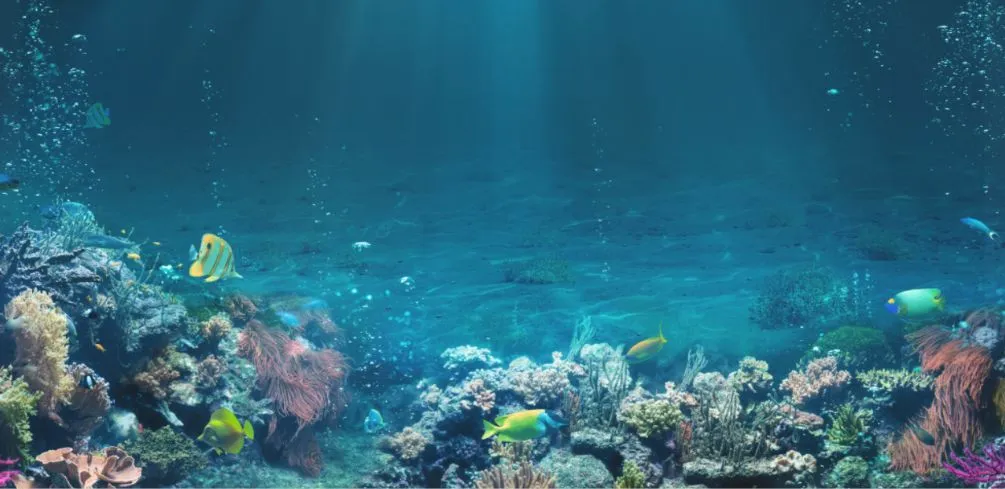Have you ever wondered how much oxygen the ocean produces? As one of the most diverse ecosystems on Earth, coral reefs play a crucial role in oxygen production. However, there is still debate about how much oxygen these colorful underwater structures generate.
Firstly, it’s essential to understand that all plants produce oxygen through photosynthesis, including marine organisms like algae and phytoplankton.
Coral reefs are unique because they’re made up of polyps and symbiotic algae called zooxanthellae which live within their tissues. These tiny organisms use sunlight to create energy for themselves and their host coral. In doing so, they produce excess amounts of oxygen as waste released into the surrounding water column.
While it’s difficult to quantify precisely how much oxygen each reef produces, studies have estimated that some healthy reefs can generate up to 7 tons of oxygen per acre daily! This makes them incredibly important contributors to our planet’s atmosphere and overall health.
So next time you take a deep breath, remember that coral reefs may have had a hand in producing that life-giving air we all rely on.
The Role Of Corals In Our Ecosystem
Have you ever wondered what role coral reefs play in our ecosystem? I mean, they sit there looking pretty and colorful, right?
Well, my friend, let me tell you that these fascinating structures are not just for show. In fact, they serve a crucial purpose – producing oxygen! Yes, you heard that right. Coral reefs are one of the primary producers of oxygen in our oceans.
But how do these seemingly lifeless rocks produce oxygen?
The answer lies within the tiny creatures called coral polyps that inhabit them. These little guys have a symbiotic relationship with algae living inside their tissues. The algae provide food to the coral polyps through photosynthesis, while the polyps provide shelter and nutrients to the algae.
This mutually beneficial partnership produces oxygen as a byproduct released into the water column, providing much-needed oxygen for other marine life.
So if we want to maintain ocean health, protecting and preserving coral reefs should be on our priority list.
The Necessity Of Sunlight For Corals
Now that we understand the crucial role corals play in our ecosystem let’s explore another important aspect of their existence – the necessity of sunlight. As you may already know, coral reefs are built by millions of tiny animals called coral polyps.
These polyps have a symbiotic relationship with algae known as zooxanthellae, which live inside them and provide them with food through photosynthesis. But this process can only occur if enough sunlight reaches the coral reef.
- Coral reefs produce oxygen: One of the most significant benefits coral reefs offer to our planet is oxygen production. Like plants on land, the symbiotic algae living within coral polyps use carbon dioxide and sunlight to produce oxygen through photosynthesis.
- Symbiotic algae: The zooxanthellae living within coral polyps provide food for not only themselves but also the entire reef system. They create a vital foundation for other marine life forms, such as fish and crustaceans.
- Ocean temperatures: Corals require specific ocean temperature ranges to thrive; otherwise, they undergo bleaching events where they expel their symbiotic algae and turn white or die off entirely.
- Calcium carbonate: While producing oxygen, coral reefs also help store carbon dioxide by forming calcium carbonate skeletons that sequester it from the atmosphere.
Therefore, without sufficient sunlight penetrating the water column into shallow tropical seas where these ecosystems exist would result in detrimental consequences for our oceans’ inhabitants and human society since 25% of all marine species depend on healthy coral reef habitats for survival.
The Amount Of Oxygen Generated By Corals
Have you ever considered how much oxygen is generated by coral reefs? It may surprise you to know that these beautiful underwater ecosystems are responsible for producing a significant amount of the air we breathe.
In fact, the tiny coral polyps that makeup reef building corals work with symbiotic algae to generate as much as 85% of the oxygen in our atmosphere! But it’s not just coral polyps and their symbiotic partners contributing to this incredible feat.
Many other marine organisms also play a role in generating oxygen through photosynthesis.
Together, they create an intricate web of life that sustains countless species both above and below the water’s surface. As such, preserving these fragile ecosystems is crucial not only for their intrinsic value but also for our survival.
The Difference Between Barrier Reefs And Other Coral Reefs
Now that we know how much oxygen corals produce let’s talk about the different types of coral reefs.
Barrier reefs are a specific type of reef that differs from other coral reefs in several ways. First and foremost, barrier reefs form a ring around an island or lagoon instead of growing directly on it like fringing reefs do. Additionally, these particular types of reefs have a deeper channel separating them from the shore than any other type of reef.
Here are four key differences between barrier reefs and other coral reefs:
- Barrier reefs grow farther away from the shoreline.
- They form rings around islands or lagoons.
- The channels between the reef and shoreline are deeper.
- Barrier reefs can be found all over the world.
Coral species vary depending on their location within underwater ecosystems, but they all play important roles in maintaining balance within those ecosystems by providing food and shelter for various marine life forms.
It’s imperative to understand these distinctions so we can continue to protect our precious coral reefs and appreciate just how magnificent they truly are!
The Factors That Affect Coral Reef Survival
Coral reefs are one of the most important ecosystems in our planet. They provide shelter, food, and protection to thousands of marine species that depend on them for survival.
Unfortunately, coral reefs are facing many threats such as coral bleaching, ocean acidification and global warming, affecting their ability to produce oxygen.
Coral reefs do produce oxygen through a process called photosynthesis. This process occurs when algae living inside the coral tissue convert sunlight into energy used by the coral polyps to create calcium carbonate structures.
These structures form the framework of the reef and also help produce oxygen essential for all life forms in the ocean. However, suppose these corals become stressed due to environmental changes like increased water temperatures or pollution.
In that case, they may expel these symbiotic algae from their tissues resulting in less production of oxygen, which can have dire consequences for both humans and wildlife.
The Process Of Oxygen Production By Corals
Have you ever wondered if coral reefs produce oxygen? The answer is yes!
Corals are living animals that form a symbiotic relationship with algae. This means that they depend on each other for survival. The corals provide shelter and nutrients to the algae, while the algae provide food and oxygen to the corals.
The oxygen production process by corals starts with photosynthesis, where the algae use sunlight to convert carbon dioxide into glucose and oxygen. The excess oxygen produced during this process is released into the surrounding water, which benefits the corals and other marine life in the area.
Without these tiny organisms working together, our oceans would have less oxygen available for all its inhabitants. It’s amazing how even something as small as a coral reef can play an important role in our ecosystem!
Photosynthesis And Oxygen Production By Corals
In the previous section, we learned about the fascinating process of oxygen production by corals. Now, let’s delve deeper into how coral reefs produce oxygen and its significance for marine life.
Coral reefs are beautiful and essential to our oceans’ health as they provide a home for countless species of marine life. The importance of coral reefs’ ability to produce oxygen cannot be overstated; without them, our oceans would suffer from an insufficient amount of this vital element that sustains marine life.
The symbiotic relationship between corals and algae provides a significant source of oxygen production in these underwater ecosystems. Here are three ways in which coral reefs contribute to producing oxygen:
- Photosynthesis: Algae living within coral tissues use sunlight to convert carbon dioxide into energy-rich organic compounds, releasing oxygen as a by-product.
- Coral Respiration: Like all animals, corals breathe in oxygen and exhale carbon dioxide during respiration. However, most of the time, their photosynthetic partner takes care of this gas exchange.
- Water Movement: As water moves through the reef structure, it brings dissolved gases like oxygen that can be used by both corals and other organisms.
Conclusion
In conclusion, it is evident that coral reefs do produce oxygen. But the importance of these beautiful structures goes far beyond just their oxygen production.
They are home to countless marine species and provide protection for coastlines from storms and erosion. As humans, we must recognize the crucial role coral reefs play in our ecosystem and take action to protect them.
Our planet’s health is directly linked to the well-being of these precious underwater ecosystems. Let us all make a conscious effort to reduce pollution and work towards preserving our oceans for future generations.
It is up to us to ensure that the beauty of coral reefs continues to thrive for years to come.





